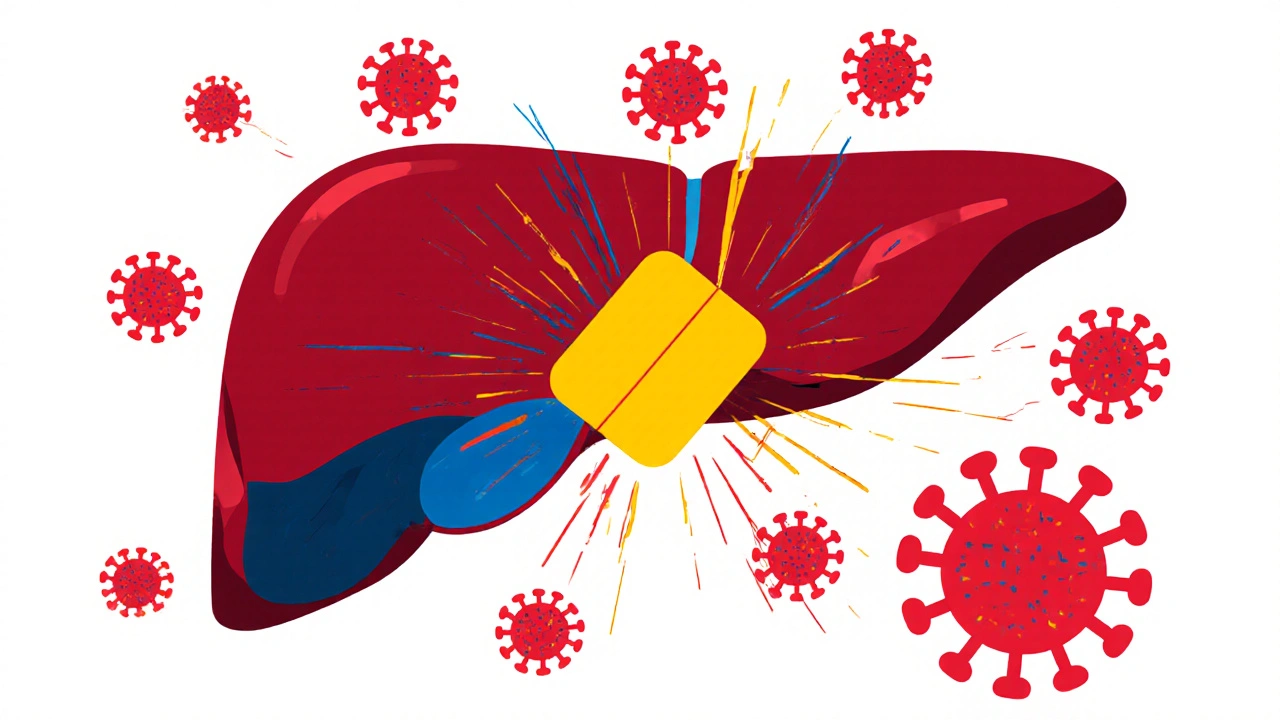Hepatic Disease Progression Explained
When talking about Hepatic Disease Progression, the step‑by‑step worsening of liver health from early injury to advanced scarring and failure. Also known as liver disease advancement, it covers the whole cascade from inflammation to fibrosis, cirrhosis, and eventually liver cancer. A major component of this cascade is Liver Fibrosis, the buildup of scar tissue that reduces the organ’s ability to filter blood. If fibrosis goes unchecked, it often leads to Cirrhosis, a hardened, nodular liver that struggles to perform essential metabolic tasks. The final, most serious stage is Hepatocellular Carcinoma, primary liver cancer that typically arises on a background of chronic damage. Understanding how these entities interact helps you see why hepatic disease progression matters for anyone at risk.
Key Factors Driving the Progression
Several forces push the liver along this harmful path. Chronic viral infections such as hepatitis B and C are classic culprits; they keep the immune system in a constant state of attack, fueling inflammation and scar formation. Alcohol overuse creates toxic metabolites that directly injure liver cells and amplify fibrosis. Metabolic conditions—non‑alcoholic fatty liver disease (NAFLD), obesity, and type‑2 diabetes—deposit fat in the liver, triggering oxidative stress and the same fibrotic response. Even certain medications, including some antibiotics and chemotherapy agents, can cause hepatotoxicity that accelerates the cascade. Regular monitoring with liver function tests (ALT, AST, GGT, bilirubin) provides an early warning system; rising enzyme levels often signal that the liver is moving from simple inflammation toward fibrosis. Imaging tools like transient elastography measure tissue stiffness, giving a non‑invasive snapshot of how much scar tissue is present. Lifestyle tweaks—cutting alcohol, adopting a Mediterranean‑style diet, and staying active—slow down or even reverse early‑stage fibrosis. For those already facing cirrhosis, managing complications (ascites, variceal bleeding, encephalopathy) becomes central to preserving quality of life. Supplemental options, such as herbal liver tonics like Liv.52 Syrup, are frequently discussed; they aim to support hepatocyte regeneration and antioxidant defenses, though clinical evidence varies.
When the disease reaches cirrhosis, surveillance for hepatocellular carcinoma is essential. Ultrasound every six months, sometimes combined with alpha‑fetoprotein (AFP) testing, catches tumors when they’re still treatable. If cancer does emerge, treatment choices range from surgical resection and ablation to systemic therapies that target cancer cells while sparing remaining liver tissue. Throughout every stage, patient education is a cornerstone: knowing the signs of decompensation (jaundice, swelling, confusion) encourages prompt medical attention and can prevent emergencies. The collection of articles below dives deeper into each of these topics—whether you want to learn about how calcium deficiency may indirectly affect heart and liver health, compare herbal liver tonics, or understand the role of specific medications in liver injury. Use the resources to build a clear plan that matches your risk profile and keeps your liver moving in the right direction.

